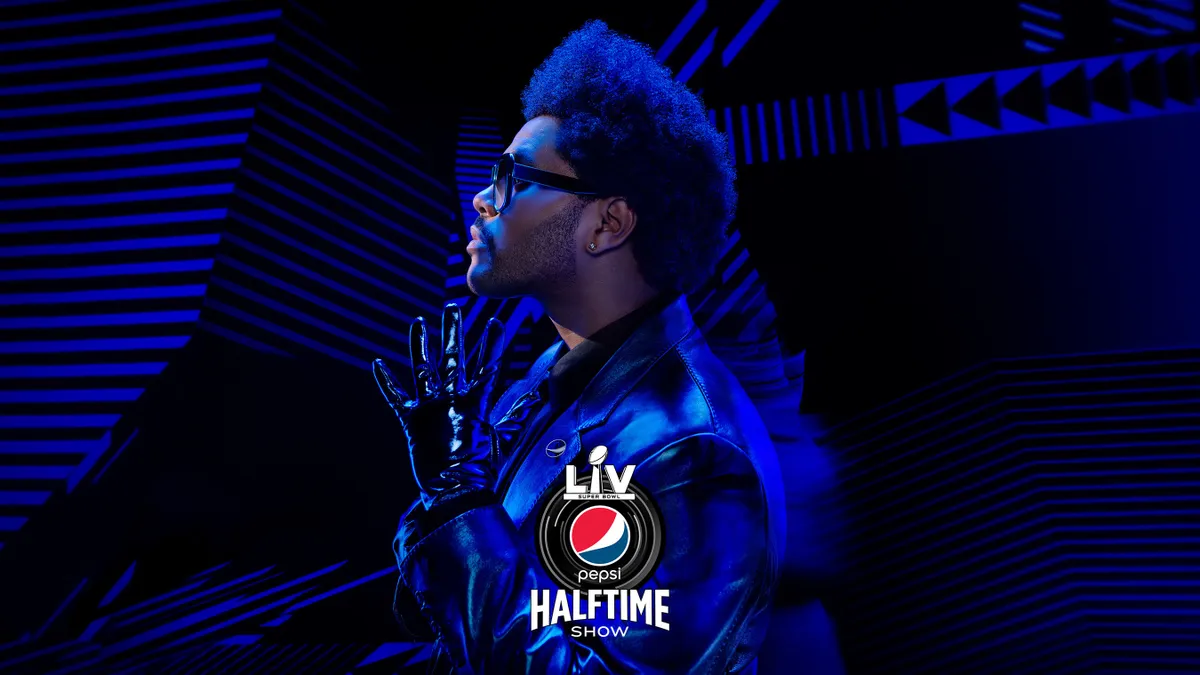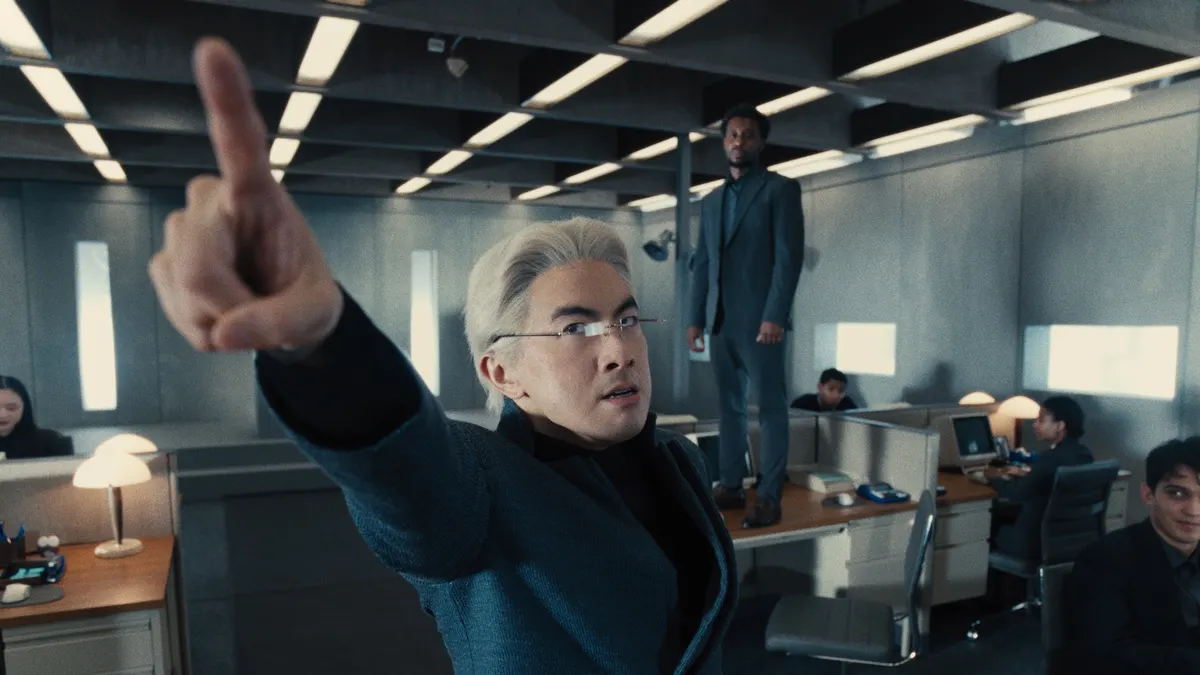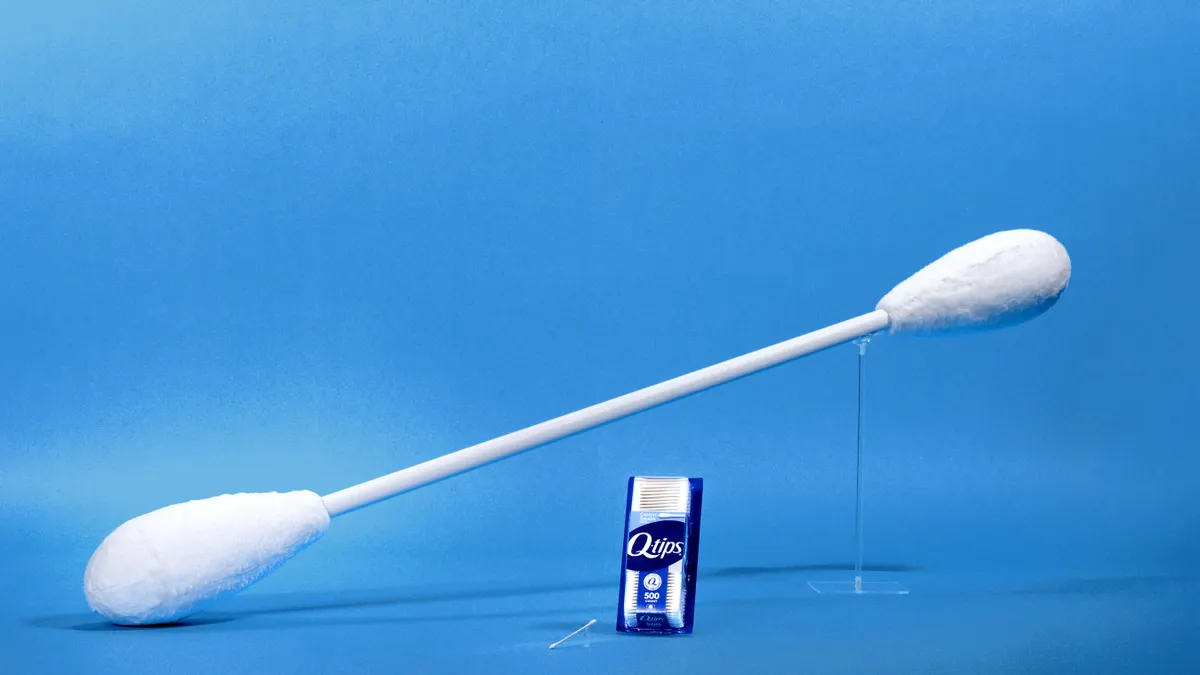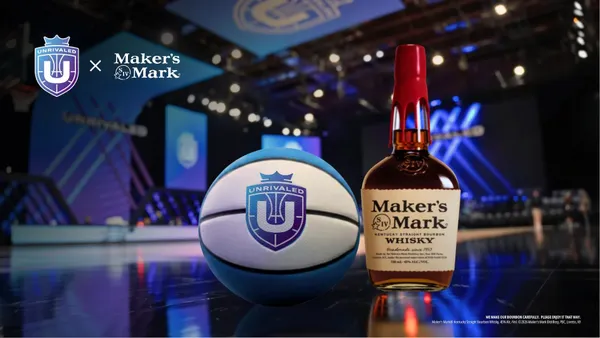Despite prior speculation that the pandemic could throw cold water on the agency in-housing trend, major marketers like PepsiCo have continued to ramp up their activities in the space. If anything, the food and beverage giant has had to adopt a more measured approach to projects to avoid getting swamped.
"When we scale, we're careful to bring folks on in a way that's going to set them up for success," said Louis Arbetter, vice president of content and production at PepsiCo Beverages North America and the head of the division's in-house Content Studio. "We're growing tremendously, but you don't want to grow too quickly."
Recent initiatives from the group include a Showtime documentary produced with Boardwalk Pictures and directed by Nadia Hallgren that took viewers behind-the-scenes of the Pepsi Super Bowl Halftime Show featuring The Weeknd. Arbetter previously helped spearhead the viral digital content series "Uncle Drew" that depicts NBA star Kyrie Irving as an old man whose skills on the court shock unwitting street players. The concept was spun into a feature film — the first to be based on a branded content series — in 2018, where Arbetter served as executive producer.
Below, Marketing Dive spoke with Arbetter about the challenges and opportunities of the pandemic's streaming and social video boom, how PepsiCo learns from external agency partners and in-housing's role in the metaverse.
Editor's note: This interview has been edited for clarity and brevity.
MARKETING DIVE: You just got back from a shoot. What has your project volume looked like in recent months compared to the rest of the pandemic or even pre-pandemic?
LOUIS ARBETTER: Volatility is something we all just need to be comfortable with, but that has had one impact on our business, which is growth. Necessity is the mother of invention. When you need to find new, innovative ways to do things, you're more open to changing it up a little bit. Having a thought partner in-house is a real advantage I think a lot of brands have now taken up, so our partnership with the brands has expanded in a major way — the number of projects, the number of strategic discussions even before you get to turning a camera on. We're much more involved upstream in defining what the common strategy should be and how that big idea should come to life across different channels. It's to the point where we balance being able to deliver everything with the team that we have, so we've had to say no to some things. You can't ask new folks to take on a million things at once.
When you say new folks, I imagine you've hired more?
ARBETTER: The team is constantly growing, but we try to limit the amount. It's not like we're going to double in a month, because that's a surefire way to start doing nothing. We don't have to do everything, but once we do agree, we have to over-deliver. Building trust with your brand partners is important, and you don't want to hurt that trust by dropping the ball.
In terms of the types of people you've been looking to add, are there new areas?
ARBETTER: Totally. So our strategy function within the studio — and it's really focused on comms strategy — is probably our most robust. In terms of bringing new folks, we built out a whole social listening capability. The way we used to look at social listening was quite reactive: How are folks reacting to what we put out there? Now, it's very much leveraging this capability to proactively understand what consumers are talking about, how they're feeling and then incorporating those insights into the brief. That shapes the creative that we're making.
We kind of look at our in-house capability a little differently than I think some other companies do. We're here to support our brands and our agency partners to help them succeed. I'll sit with our external agency partners and ask them what's working, what's not working. They haven't been shy of saying, sometimes those briefs are pretty s----y. So we have to improve what we're doing.
You say that is something PepsiCo does differently. In-house versus external agencies is often positioned as very competitive in the media. Do you think other companies have a one-track thinking when it comes to in-housing?
ARBETTER: The easiest way to justify building an in-house team is efficiency, and efficiency is often defined through a singular lens of, 'I can do X for less money.' But we can also save time. So if I help reduce the rounds of creative between a brand team and an external agency, that is gaining efficiency. That agency is spending less time working on the project, billing less hours. That's a different kind of efficiency that I think folks need to understand. There's lots of ways that we can speed up and save dollars. Sure, we definitely bring certain types of work in, but we're never going to want to bring everything in. That makes no sense.
Your past work has been really focused on product integration. There's so much programming at the moment, I imagine there's a lot of opportunity. How has your thinking changed?
ARBETTER: If I could add a word, it's volume of opportunity. We're constantly on the prowl for new ways to collaborate. The companies that will succeed and come out on top are those that are able to collaborate without ego, without pinning themselves to the way things have worked in the past. We have now had a lot of success with this. To come out and take what is an existing platform of the Super Bowl halftime show and then extend that equity through a documentary, which is partnering in a very different way with the NFL, with Roc Nation, with Nadia Hallgren, our director. Putting a documentary out on Showtime, that's innovative and just kind of the type of stuff we're going to be continuing to do.
The flip side is there's just so much content out there right now. Does that create challenges?
ARBETTER: You cannot view your competition and the work we're creating as content and commercial time. The work that I'm talking about is really any piece of content that any streaming platform, studio or what have you will put out. It's just got to be entertaining for entertaining's sake, period. The good news is, we are in a position to not hope that the stars align. We are in a position to reach up and really align the stars and call the partners and bring people to the table. A lot of brands are starting to realize that they cannot just create compelling content, but also even create compelling content with a purpose and advance certain conversations in a positive direction that otherwise we couldn't do. I do understand there are challenges, but we'll take that gauntlet with the opportunities that it provides.
You said you're excited to collaborate with partners who recognize things don't work the way they have in the past. Have your metrics for success changed?
ARBETTER: This is one where sometimes folks overcomplicate things. Before the project, we have to align on what our objectives are. People are always focused on, well, how are we going to measure stuff? In the case of the halftime show, we already get a lot of eyeballs on that. But if we want to extend the equity; if we want to extend the conversation about this platform; extend the linkage between the brand and the most exciting moment and culture, those are objectives that we can we can wrap our heads around and then figure out how to measure them through sentiment, views, engagement and the like. But each measurement starts with each project and the objective you want.
Looking ahead to 2022, are there areas in your strategy that you're excited about filling out?
ARBETTER: Overall, we just want to make sure that each of the brands has a well-defined strategy. Then like any good strategy, we are truly making choices on where to invest their resources and not spreading the peanut butter too thin across the piece of toast. That's probably one of the surest ways to fail is making too many small little bets all over the place. We feel like some of the long-form work that we're doing is a great way to bring the brand story to life, to bring the brand's purpose to life. You can often tell these deeper, more meaningful stories. So we have a lot of work in the pipeline to do just that. And the brands can't get to the place where they're making those choices without a robust strategy, so we're helping a lot with that. Anything like social listening we can do to give them more data to help make decisions.
We’re helping beef up certain levers that they're already pulling, but maybe improving the precision of the lever. Influencer marketing is something that everybody's been doing for a long time, but has every brand done a great job of integrating that lever into their broader plans or is it in some cases an afterthought? Certain tools like influencer marketing, I think we could do an even better job.
There's a lot of technology, the pandemic really forced people to innovate. When you looked at NBA games and saw virtual fans in the stands, nobody really wanted to have to think of that. But, that's pretty cool. Why wouldn't you keep doing that?
The big buzzword is 'metaverse.' I don't know how much of that falls under your purview.
ARBETTER: We don't make a decision that all meta ideas are going to go to one place. We believe that great ideas can come from anywhere. So it's not an in-house or external whatever. Everybody recognizes that there are a lot of new cool ways to interact with our consumers like Nike did with Roblox. We're working on some things now we feel good about. You’ve just got to learn by doing to some extent. The same with the NFTs and all that. I don't think you could say, 'Oh, we're gonna hit a hole in one straight out of the gate.' You’ve got to get into it, roll up your sleeves and maybe you stumble a little bit trying something, but that's alright. A lot of folks get paralyzed by waiting for just the perfect thing. [Editor's Note: Pepsi released its first NFT collection with VaynerNFT in the days following this interview, though Arbetter's team was not directly involved with the project].
Operationally, what does your team setup look like at the moment? How do you see it looking in 2022?
ARBETTER: At this point, wherever the most talented qualified person is, I think we've proven that we can work together really well. So we have folks based all over: L.A., New York are certainly the hubs, but we got folks sprinkled across the country. We bring folks together for shoots as needed. And I look forward to a time when everybody can get together and have more fun. But right now, it's working really well.





















